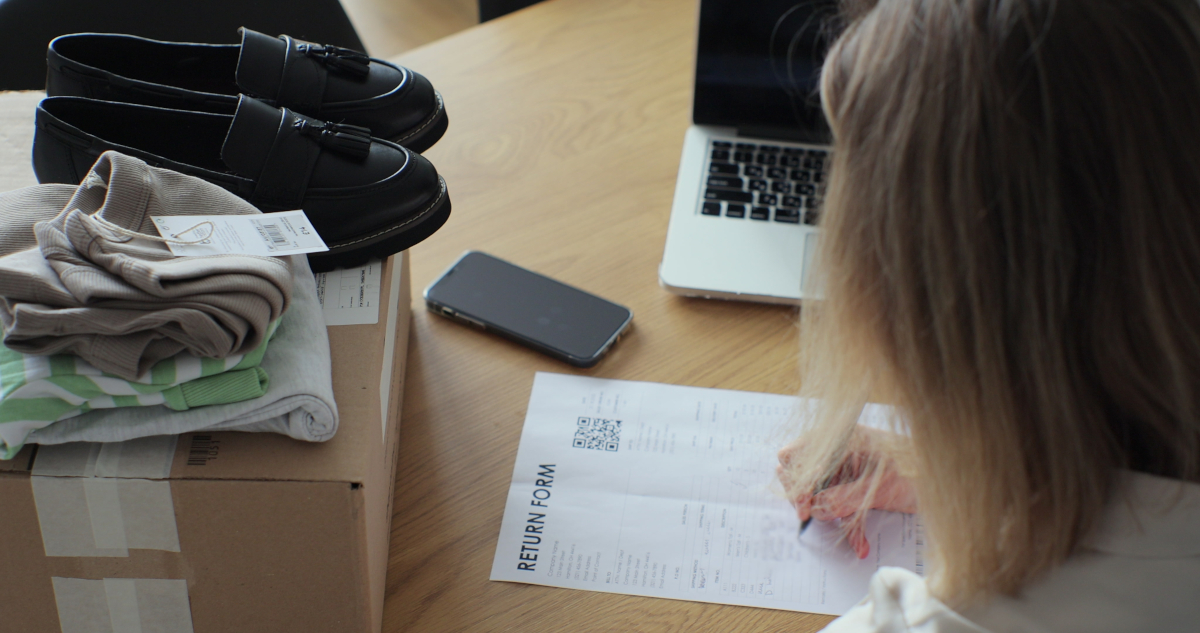Learn how to increase revenue using insights from retail bracketing returns.
Retail bracketing is when shoppers purchase a product in a range of sizes and/or variations. This ensures that customers receive their ideal product the first time rather than having to return a version that didn’t work and risk it being unavailable later. Once they find their desired product, they’ll return the rest.
While bracketing may seem similar to fraudulent shopping behaviors like wardrobing, its differences are important. Not only is the intent behind bracketing far less malicious, but returns data from these transactions can provide valuable customer behavior insights that retailers can use to increase net revenue.
Discover how granular returns analytics from bracketing transactions can be used to optimize product assortment, improve product details, reduce returns, and increase net revenue.
Retail Bracketing Insights Can Help Optimize Product Assortment
While customers who bracket for size will usually return multiple products, those who bracket for other features (color, heel height, etc.) often end up keeping many of the products they’d intended to return. We’ve even observed keep rates higher than 75% for such transactions. In this instance, retail bracketing insights can be used to improve product assortment.
For example, imagine that a brand discovers its shoppers like to bracket specific garments for color. If this product also has a low retail return rate, customers are signaling that they’re willing to purchase multiple color variations of this product. Consequently, encouraging bracketing by offering multiple color options can lead to increased net revenue.
On the other hand, it’s important to note when specific product variations are regularly returned. If certain styles have a very high return rate in bracketing transactions, it may be time to rethink including these styles in your product assortment. Removing these variations can reduce returns and help customers focus on products they’re more likely to keep.
Improve Product Details with Insights from Bracketing Returns
In the scenario mentioned above, it makes sense to remove regularly returned product variations to reduce unwanted returns. However, determining the return reasons for those products can reveal important product detail insights.
The right returns management platform can analyze unstructured data/comments from customer feedback. That means product reviews from bracketing returns and return forms can be cross-referenced with other analytics to develop a product improvement plan. For example, when customers say a product wasn’t what they expected, providing additional images or a more detailed description may be beneficial.
First purchase bracketing transactions are particularly valuable in this regard. When shoppers are unfamiliar with a brand’s sizing, materials, or even quality, they may choose to bracket so they can assess many of these features.
While the keep rate for these purchases can vary, the data and customer feedback from these returns can be used to improve the overall shopping experience for new customers, recurring customers, and even extremely loyal customers. That can lead to increased acquisition, higher customer lifetime value, and stronger customer loyalty.

Use Retail Bracketing Insights to Reduce Size-Related Returns
As we’ve mentioned, the keep rate for size-related bracketing transactions tends to be much lower compared to other types of bracketing. This makes a lot of sense since a customer likely doesn’t need the same product in multiple sizes. However, it does mean that any size-related product details likely need to be improved.
For example, imagine a luxury shoe retailer discovers that their customers are bracketing for heel height and almost always returning the kitten heel. Returns analytics will not only identify the specific variations with a high customer return rate but it can also help the retailer determine what aspect of the sizing information needs to be improved.
These improvements can include, but are not limited to:
- Including brand-specific sizing charts.
- Including country-specific size guides.
- Providing sizing clarity on unisex items.
- Making sure size conversion charts are accurate and simple to understand.
- Informing consumers when product features, such as material or heel height, impact size or fit.
Leverage Bracketing Insights to Improve Marketing ROI
While impressive top-line sales can make it appear as though advertising efforts are successful, returns will eat into these profits and negatively impact net revenue. Returns analytics from bracketing transactions, however, can tell you quite a bit about your customers and the real-world impact of your marketing efforts. This information can then be used to optimize advertising spending and increase net revenue.
For retailers that carry multiple brands, customer insights like these are essential when determining which brands and styles to prioritize in ad campaigns. If a large number of bracketing returns include specific brands or styles, reducing ad spending for those products and reallocating it to better-performing ones will increase net revenue.
Additionally, insights from bracketing can be used to optimize advertising by channel. For example, if a retailer notices low keep rates on bracketing transactions from a specific channel, retailers can cancel those ads or create channel-specific ad content that addresses those return reasons. Either way, this information allows retailers to reduce customer return rates and protect net revenue within specific channels.
Increase Net Revenue with Retail Bracketing Insights From Returnalyze
Increased visibility into bracketing can reveal pitfalls to avoid and opportunities that protect and grow net revenue. That’s why using an advanced return management platform is so important.
This type of information was difficult, if not impossible, to attain in the past, but today, the Returnalyze Intelligent Dashboard allows you to access the granular data necessary for this type of analysis. What’s more, a partnership with Returnalyze comes with step-by-step guidance and analysis from our data experts.
The information you need already exists within your bracketing returns. Let us help you analyze this information and develop data-driven ecommerce returns solutions.
Schedule a demo or contact our team today.


